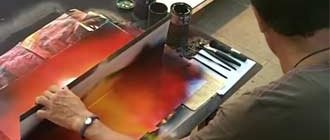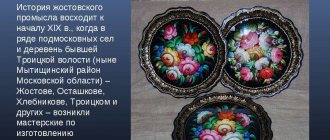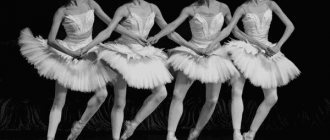Types of hairdressers
In ancient times, hairdressers cut everyone's hair, but modern hairdressers are clearly divided into several categories. This division is absolutely correct, since a narrow specialist has a much better command of the skills necessary for high-quality provision of services.
Universal hairdresser (stylist-make-up artist)
The most universal category of hairdressers . Such a specialist will help you radically change your image, because he will not only help you choose a good haircut and new hair color, but will also do professional makeup and give style advice.
Barber
Recently, men's haircuts have become more complex. In addition, many representatives of the stronger sex wear beards, which also need care. A separate category of hairdressers was created especially for men who take care of their appearance.
A men's hairdresser is well versed not only in hairstyles, but also in clients' beards.
Moreover, if previously a man could get his hair cut in any salon, now there are separate barbershops that specialize specifically in male cosmetic procedures .
Children's hairdresser
Children's hairdresser is one of the most difficult professions . Many kids are afraid to get their hair cut , so such a hairdresser must be able to find a common language with children and convince them that getting their hair done at a hairdresser is not at all scary, and most importantly, that the children would like to return to the hairdresser again.
Children's hairdresser - knows how to calm a fidgety child
As is the case with men's salons, separate hairdressing salons are usually opened for children. They are decorated and furnished so that the kids find it interesting and comfortable.
Pros and cons of being a hairdresser
Working as a hairdresser, like any other type of activity, has its advantages and disadvantages. Those who have decided to connect their lives with this activity must definitely evaluate all the pros and cons.
pros
There are many advantages to working as a hairdresser:
- Quick learning : to start working, it is not at all necessary to obtain a higher education; it is enough to take special courses (from 4 months), and this can be done at any age.
- Opportunity to work for yourself : a good hairdresser can always open his own salon or rent a chair in a hairdresser and open a small business.
- Can be combined with other specialties : by constantly learning, the skills of a hairdresser can be supplemented with the ability to do manicures, makeup and complex hairstyles . In this case, earnings will increase significantly.
Minuses
Unfortunately, the profession also has disadvantages:
- to acquire regular clients and become a real professional.
- To receive a stable income, you need to constantly study and keep abreast of the latest fashion trends; regular master classes and webinars should be constant companions of a successful master.
- Clients are often capricious , so you need to be prepared for criticism and unpleasant moments.
Also, do not forget that a hairdresser is a fairly in-demand profession, and to get a good job you will have to withstand serious competition .
What does a hairdresser do?
The times when the same hairdresser did both men's and women's haircuts are long gone. Modern masters are clearly divided into categories , although each specialist has certain skills.
Let's look at the main ones in more detail.
Haircut
Haircut is the most popular service provided by hairdressers. There are both generalists and individual specialists for men, women and children . As a rule, during the training process, future masters learn the basics of hairdressing, and in the process of working, they determine what type of haircuts they will perform.
Men's haircuts are considered the simplest , although recently this area has become more complicated. Now men's masters not only cut the hair on the head, but also shave the beards, giving them a certain silhouette . Naturally, this requires additional training .
Laying
This line of work of a hairdresser usually goes in conjunction with a haircut . Even in express hairdressers that provide a quick haircut service, the client will be given light styling to make the new hairstyle look more advantageous.
Professional styling is the key to a good mood after going to the hairdresser
Professional salons provide a full range of services, starting with hair washing and cutting, and ending with professional blow-drying and special products.
Hair care and restoration
damaged and weakened hair go to hairdressers . A professional technician will help you deal with this problem.
A professional specialist will individually select care products and carry out a set of treatment procedures that will help strengthen the hair follicles, restore shine and softness to the hair , restart the growth process and stop hair loss.
Braiding
Weaving braids and braids can be called a type of styling, although not all masters have . As a rule, good salons have a separate hairdresser who can braid numerous African braids or create complex hairstyles with thick braids.
Coloring
In ancient times, hairdressers not only mastered scissors, but also had certain skills in chemistry . This feature has survived to this day.
Note! Only a specially trained and professional hairdresser will be able to choose a new hair color that will ideally suit the client. Moreover, a good specialist knows how to not only use ready-made colors, but also mix them randomly to achieve a unique shade.
It is not for nothing that professional stylists insist that it is better to dye your hair in a salon rather than at home. Otherwise, there is a high risk of damaging your hair or getting the wrong shade that was originally planned.
Those who want to dye their hair a light color should be especially careful. Quite often , hair dyed at home takes on an unsightly yellow tint . In salons, this problem is eliminated with special means, so to change your image, it is better to immediately contact a trusted specialist.
Who is a hairdresser?
A hairdresser is a specialist who cares for hair. Such care consists not only of cutting, styling and choosing an individual style, but also of restoring and strengthening the hair.
The first hairdressers appeared in ancient times, in the countries of the East . Initially, the role of such a specialist was not limited to hairstyles. Our ancestors believed that hair has some connection with the other world. If a person fell ill , a hairdresser was invited to the house, who cut off and burned the locks . It was believed that in this way the spiritual essence of a person was healed.
Reference! Hairdressing salons in the modern sense appeared in Ancient Greece and Egypt. It was here that they began not just to cut or shave their hair, but to choose a haircut according to the shape of the face.
Until the 18th century, hairdressers were in great demand, but the 18th and 19th centuries saw a decline in the profession . It only stopped at the end of the 19th century, when the first barber school opened in Chicago. Modern hairdressers don’t just cut hair, but select an individual style for each client .
If necessary, such a specialist will dye, curl or restore damaged hair .







